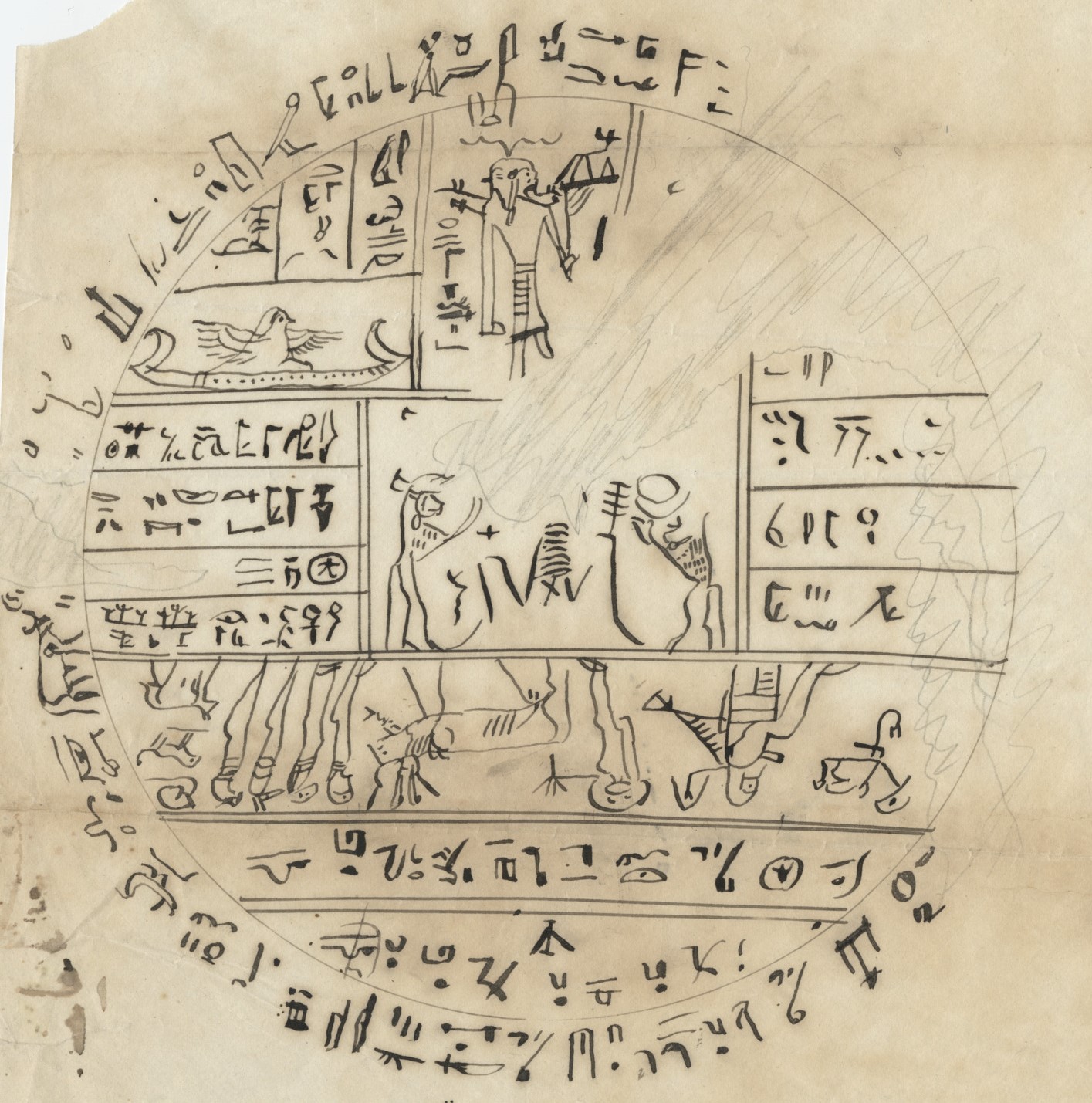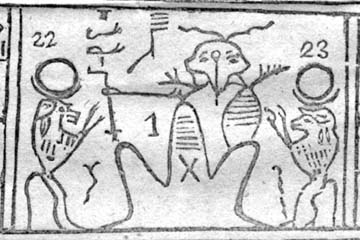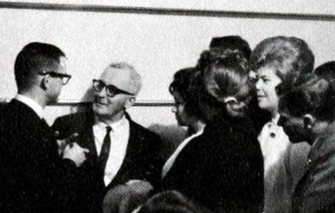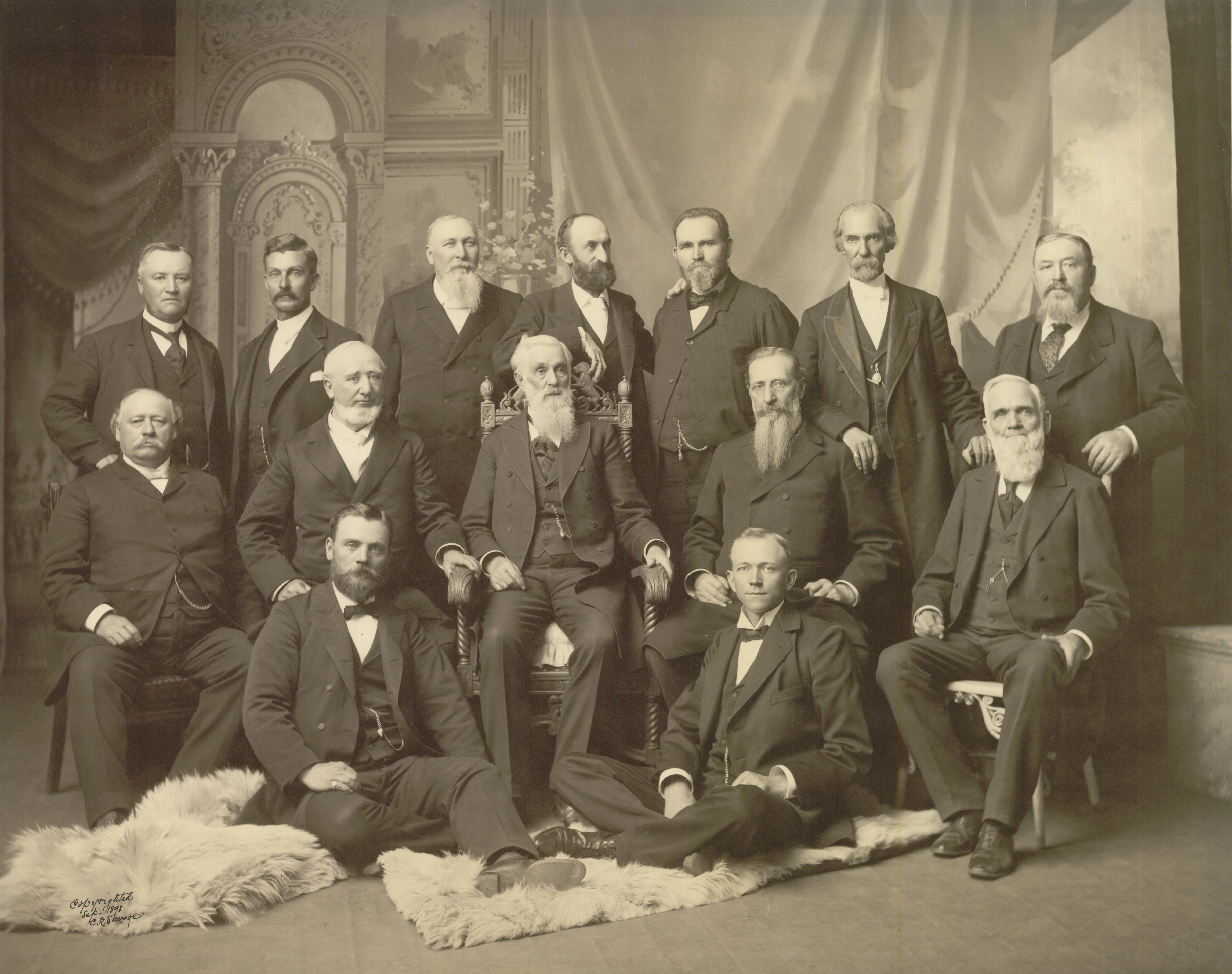|
Oliblish
Oliblish is the name given to a star or planet described in the Book of Abraham, a text considered sacred to many denominations of the Latter Day Saint movement, including the Church of Jesus Christ of Latter-day Saints(LDS Church). Several Latter Day Saint denominations hold the Book of Abraham to have been translated from an Ancient Egypt, Egyptian Joseph Smith Papyri, papyrus scroll by Joseph Smith, the founder of the movement. According to this work, the term Oliblish was given as the meaning of the main symbols in one of the images of Joseph Smith Hypocephalus, Smith's hypocephalus. Smith stated that the image is meant to represent a heavenly body located nearest to the central Kolob, the planet or star closest to the throne of God.Rhodes, M. D. (1994)The Joseph Smith Hypocephalus… Twenty years later Brigham Young University Foundation for Ancient Research and Mormon Studies. The image appears on Figure No 2 of the scrolls, over the shoulders of which are jackal heads. In ... [...More Info...] [...Related Items...] OR: [Wikipedia] [Google] [Baidu] |
Joseph Smith Hypocephalus
The Joseph Smith Hypocephalus (also known as the Hypocephalus of Sheshonq) was a papyrus fragment, part of a larger collection of papyri known as the Joseph Smith Papyri, found in the Gurneh area of Thebes, Egypt, around the year 1818. The owner's name, Sheshonq, is found in the hieroglyphic text on said hypocephalus. Three hypocephali in the British Museum (37909, 8445c, and 8445f) are similar to the Joseph Smith Hypocephalus both in layout and text and were also found in Thebes. A woodcut image of the hypocephalus was initially published on March 15, 1842, in Volume III, No. 10 of the Latter Day Saint newspaper ''Times and Seasons'', two years before the death of Joseph Smith, who was the editor of the Times and Seasons. This image is included as one of several appendices to the Book of Abraham, where it is called Facsimile No. 2. The Book of Abraham has been considered scripture by members of the Church of Jesus Christ of Latter-day Saints (LDS Church) since 1880. The locatio ... [...More Info...] [...Related Items...] OR: [Wikipedia] [Google] [Baidu] |
Kolob
Kolob is a star or planet described in the Book of Abraham, a sacred text of the Latter Day Saint movement. Several Latter Day Saint denominations hold the Book of Abraham to have been translated from an Ancient Egypt, Egyptian Joseph Smith Papyri, papyrus scroll by Joseph Smith, the founder of the movement. According to this work, Kolob is the heavenly body nearest to the throne of God. While the Book of Abraham calls Kolob a "star", it also calls planets "stars", (noting "Confusion between the uses of the terms stars and planets"). and therefore some Latter Day Saint commentators consider Kolob a planet. The body also appears in Culture of The Church of Jesus Christ of Latter-day Saints, Latter Day Saint culture, including a reference to Kolob in an LDS hymn. Doctrine and exegesis Description in the Book of Abraham The first published reference to Kolob is in the Book of Abraham, first published in 1842 in ''Times and Seasons'' and now included within the Pearl of Great Pri ... [...More Info...] [...Related Items...] OR: [Wikipedia] [Google] [Baidu] |
Millennial Star
''The Latter-day Saints’ Millennial Star'' (usually shortened to ''Millennial Star'') was the longest continuously published periodical of the Church of Jesus Christ of Latter-day Saints (LDS Church), and was printed in England from 1840 until 1970, when it was replaced by the church-wide ''Ensign''. It was primarily aimed at British Latter-day Saints. History The first issue of the ''Millennial Star'' was published in Manchester, England, in May 1840, with Latter Day Saint Apostle Parley P. Pratt as editor and W. R. Thomas as printer. First mention of the newspaper being sold in Liverpool appeared in March 1842, and printing was officially moved to Liverpool with the April 1842 issue. Pratt was eventually replaced as editor by Thomas Ward. When Ward left England, Orson Hyde, who was then serving as Mission president in the area, became the editor. After that point, editing and supervision of the ''Star'' fell to the subsequent mission presidents of the church's European Missi ... [...More Info...] [...Related Items...] OR: [Wikipedia] [Google] [Baidu] |
Memphis, Egypt
, alternate_name = , image = , alt = , caption = Ruins of the pillared hall of Ramesses IIat Mit Rahina , map_type = Egypt#Africa , map_alt = , map_size = , relief = , coordinates = , location = Mit Rahina, Giza Governorate, Egypt , region = Lower Egypt , type = Settlement , part_of = , length = , width = , area = , height = , builder = Unknown, was already in existence during Iry-Hor's reignP. Tallet, D. Laisnay: ''Iry-Hor et Narmer au Sud-Sinaï (Ouadi 'Ameyra), un complément à la chronologie des expéditios minière égyptiene'', in: BIFAO 112 (2012), 381–395available online/ref> , material = , built = Earlier than 31st century BC , abandoned = 7th century AD , epochs = Early Dynastic Period to Early Middle Ages , cultures = , dependency_of = , occupants = , event ... [...More Info...] [...Related Items...] OR: [Wikipedia] [Google] [Baidu] |
Seker
Seker (; also spelled Sokar, and in Greek, Sokaris or Socharis) is a falcon god of the Memphite necropolis in the Ancient Egyptian religion. Name Although the meaning of his name remains uncertain, the Egyptians in the Pyramid Texts linked his name to the anguished cry of Osiris to Isis 'Sy-k-ri' ('hurry to me'),The Routledge Dictionary of Egyptian Gods and Goddesses, George Hart or possibly ''skr,'' meaning "cleaning the mouth". In the underworld, Seker is strongly linked with two other gods, Ptah the Creator god and chief god of Memphis, and Osiris the god of the dead. In later periods, this connection was expressed as the triple god Ptah-Seker-Osiris. The Faiyumic Coptic form ⲥⲓⲭⲟⲗ is possibly preserved in a personal name ⲥⲉⲛⲥⲓⲭⲟⲗ "daughter of Sokar". Appearance Seker was usually depicted as a mummified hawk and sometimes as a mound from which the head of a hawk appears. Here he is called 'he who is on his sand'. Sometimes he is shown on his ... [...More Info...] [...Related Items...] OR: [Wikipedia] [Google] [Baidu] |
Hugh Nibley
Hugh Winder Nibley (March 27, 1910 – February 24, 2005) was an American scholar and an apologist of the Church of Jesus Christ of Latter-day Saints (LDS Church) who was a professor at Brigham Young University (BYU) for nearly 50 years. He was a prolific author, and wrote apologetic works supporting the archaeological, linguistic, and historical claims of Joseph Smith. He was a member of the LDS Church, and wrote and lectured on LDS scripture and doctrinal topics, publishing many articles in the LDS Church magazines. Nibley was born in Portland, Oregon, and his family moved to Los Angeles, California, in 1921, where Nibley attended middle school and high school. Nibley served an LDS mission in Germany, where he learned German. After his mission, he attended the University of California, Los Angeles (UCLA), where he graduated in 1934. He received his PhD from the University of California, Berkeley (UC Berkeley) in 1938. He taught various subjects at Claremont Colleges until he enl ... [...More Info...] [...Related Items...] OR: [Wikipedia] [Google] [Baidu] |
Hypocephalus
A hypocephalus is a small disk-shaped object generally made of stuccoed linen,British Museum Dept. of Egyptian Antiquities, ''A General Introductory Guide to the Egyptian Collections in the British Museum'', Published by Trustees of the British Museum, 1971, p.146 but also of papyrus,William Matthew Flinders Petrie, Edward Russell Ayrton, Charles Trick Currelly, Arthur Edward Pearse Brome Weigall, ''Abydos'', 1902, p.50 bronze, gold, wood, or clay, which ancient Egyptians from the Late Period onwards placed under the heads of their dead. The circle was believed to magically protect the deceased, cause the head and body to be enveloped in light and warmth, making the deceased divine. It replaced the earlier cow-amulet. Symbolism Hypocephali symbolized the Eye of Ra (Eye of Horus), which represents the sun deity. The scenes portrayed on them relate to Egyptian ideas of resurrection and life after death, connecting them with the Osirian myth. To the ancient Egyptians the dail ... [...More Info...] [...Related Items...] OR: [Wikipedia] [Google] [Baidu] |
Oliver Cowdery
Oliver H. P. Cowdery (October 3, 1806 – March 3, 1850) was an American Mormon leader who, with Joseph Smith, was an important participant in the formative period of the Latter Day Saint movement between 1829 and 1836. He was the first baptized Latter Day Saint, one of the Three Witnesses of the Book of Mormon's golden plates, one of the first Latter Day Saint apostles, and the Second Elder of the church. In 1838, as Assistant President of the Church, Cowdery resigned and was excommunicated on charges of denying the faith. Cowdery claimed Joseph Smith had been engaging in a sexual relationship with Fanny Alger, a teenage servant in his home. Cowdery became a Methodist, and then in 1848, he returned to the Latter Day Saint movement. Biography Early life Cowdery was born October 3, 1806, in Wells, Vermont. His father, William, a farmer, moved the family to Poultney in Rutland County, Vermont, when Cowdery was three. (Cowdery's mother Rebecca Fuller Cowdery died on September 3 ... [...More Info...] [...Related Items...] OR: [Wikipedia] [Google] [Baidu] |
Quorum Of The Twelve Apostles (LDS Church)
In the Church of Jesus Christ of Latter-day Saints (LDS Church), the Quorum of the Twelve Apostles (also known as the Quorum of the Twelve, the Council of the Twelve Apostles, or simply the Twelve) is one of the governing bodies in the church hierarchy. Members of the Quorum of the Twelve Apostles are apostles, with the calling to be prophets, seers, and revelators, evangelical ambassadors, and special witnesses of Jesus Christ. The quorum was first organized in 1835 and designated as a body of "traveling councilors" with jurisdiction outside areas where the church was formally organized, equal in authority to the First Presidency, the Seventy, the standing Presiding High Council, and the high councils of the various stakes. The jurisdiction of the Twelve was originally limited to areas of the world outside Zion or its stakes. After the apostles returned from their missions to England, Joseph Smith altered the responsibilities of the quorum: it was given charge of the affairs ... [...More Info...] [...Related Items...] OR: [Wikipedia] [Google] [Baidu] |
First Presidency (LDS Church)
The First Presidency, also called the Quorum of the Presidency of the Church'' Doctrine and Covenants'107:22 or simply the Presidency, is the presiding governing body of the Church of Jesus Christ of Latter-day Saints (LDS Church). It is composed of the President of the Church and his counselors. The First Presidency currently consists of Russell M. Nelson and his two counselors: Dallin H. Oaks and Henry B. Eyring. Membership The First Presidency is composed of the President of the Church and his counselors. Historically, and as mandated by church scripture, the First Presidency has been composed of the president and two counselors, but circumstances have occasionally required additional counselors (for example, David O. McKay had five during the final years of his presidency, and at one point, Brigham Young had eight). Counselors must be high priests and are usually chosen from among the members of the Quorum of the Twelve Apostles, but there have been a number of exception ... [...More Info...] [...Related Items...] OR: [Wikipedia] [Google] [Baidu] |
Brent Metcalfe
Brent Lee Metcalfe is an independent researcher and writer of the Latter Day Saint Movement. Contributions Metcalfe is on the editorial board of the John Whitmer Historical Association. Seventh East Press In the early 1980s, Metcalfe contributed to the Seventh East Press and Sunstone, while at the same time worked as a security guard at the Church Office Building of the Church of Jesus Christ of Latter-day Saints (LDS Church). According to Metcalfe, he was questioned by LDS Church authorities about his writing for the ''7EP'' and ''Sunstone'' was "forced to resign" from his job in April 1983. An anonymous source reported that Roy Doxey, then the director of church correlation, wanted to know about the papers Metcalfe was studying at the Church Historical Library, which were on Elias Smith and others. Doxey denied asking about Metcalfe. Metcalfe believed that his firing was because of a few people in church leadership who perceived him as a threat, even though he viewed his own wo ... [...More Info...] [...Related Items...] OR: [Wikipedia] [Google] [Baidu] |





